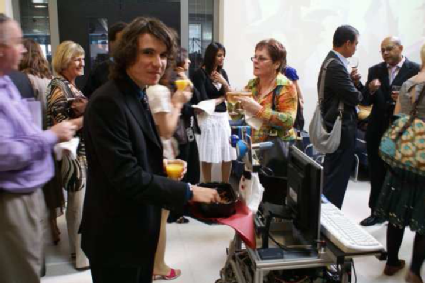The Legend of the DCS Robot
|
The department of Computer Science Robot or ‘Rob’ as it is affectionately known is a two wheel differential drive robot built in 2005 by lab technicians to aid both undergraduate and postgraduate research programs. Rob is a stand alone, battery powered robot with ultrasonic sensors, a web cam and a basic PC to connect everything together In 2006 a team of undergraduates developed a software simulation of a two-wheel differential drive robot capable of exploring an unknown environment and building an internal map of its surroundings. The following summer, two of those undergraduates namely Dominic Orchard and Daniel James, undertook a project funded by the undergraduate research scholarship scheme (URSS) to investigate robot navigation and hopefully physically implement their 2006 simulation. Since it’s construction in 2005, Rob had gone relatively unused with little research work undertaken due to an incomplete and untested control system. The first task for the two students then was to improve and complete the sensory and control systems to the point where their own further experimentation and research could be carried out. Having achieved this objective satisfactory, the students were then able to port their simulation code to the physical robot and implement a ‘waiter’ application. When acting as a waiter, the robot will wander around the room until a person comes within range of the sensors. Upon this event occurring, the robot will turn to face the person allowing them to retrieve items from the tray mounted on the front. After a given time period or if the person moves away, the robot will once again wander the room. One of the main achievements of the research undertaken by the students has been the completion of full C and Haskell Application Programming Interfaces (API) for the sensors and motors.
|
Dominic Orchard being served by ‘Rob’ at the Computer Science graduation day in July 2007These API’s allow other researchers the ability to interface with the control and sensory systems for the robot thereby enabling significant possibilities for further application development in the field of functional robotics. The project supervisor Dr Nasir Rajpoot commented that the project had been a significant success for two reasons. Firstly the students had achieved their major objective, namely porting their simulation code to the robot to achieve basic-level autonomous navigation and secondly that the project had provided the students with an excellent opportunity to apply their knowledge of mobile robotics to a real life robot and also to exercise their problem solving skills in a particularly exciting area of research. Further information about the department of computer science robot and the research undertaken by the students can be found by clicking here |

